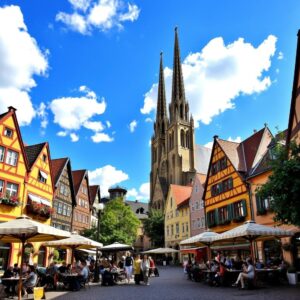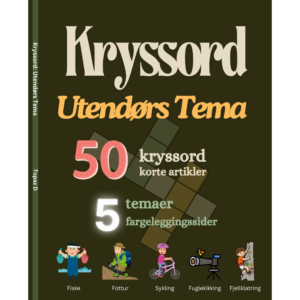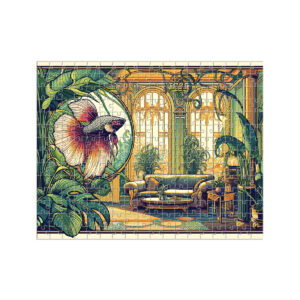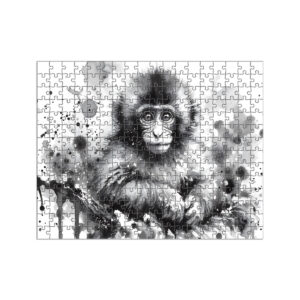
Explore & Play
Discover interesting topics and solve the accompanying crossword puzzle.
Edge Crossword | How edges shape our cities and urban experiences
Discover the Edge crossword that tests your knowledge of urban boundaries and design. Explore how edges shape cities in this insightful article.
Table of Contents
Before diving into the content, we invite you to engage with the Edge crossword at the top of the page. It offers a fun way to test your knowledge on urban boundaries and design. If you’re new to this topic, feel free to read the article first to gain a deeper understanding, and then return to tackle the crossword. Enjoy the journey of exploration!
Edge Crossword
You can either fill in the crossword puzzle directly on this page or click the button in the bottom right corner to print it for free.
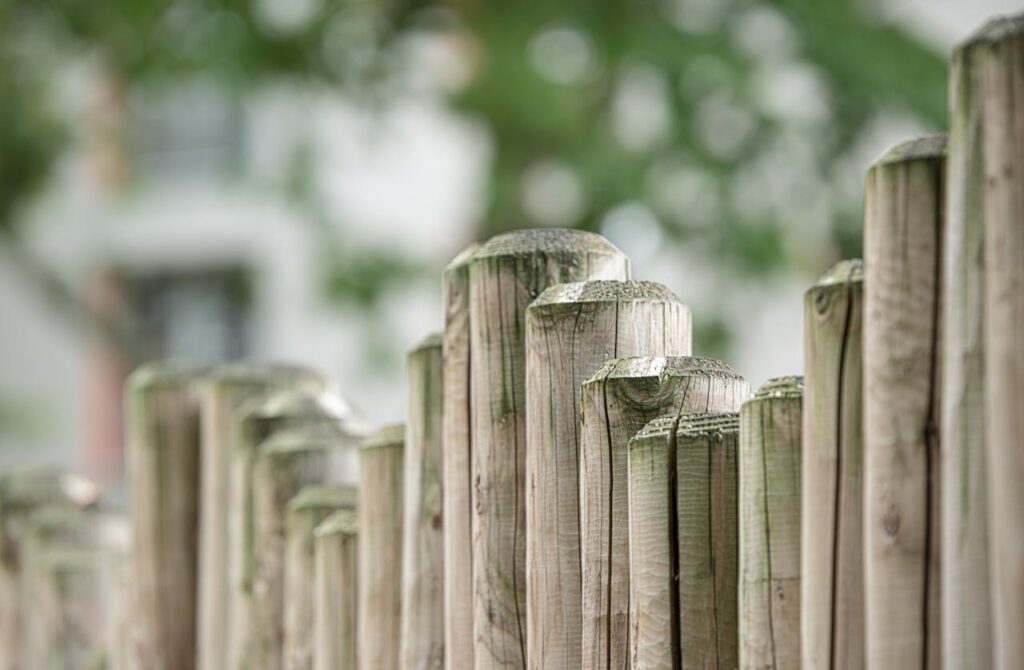
Exploring the Boundaries of Urban Design: How Edges Shape Our Cities
Cities are shaped not only by their buildings and spaces but also by the boundaries that define them, both visible and invisible. In urban design, edges—lines, boundaries, frames, and barriers—play an essential role in guiding movement, establishing space, and shaping city life. From the sharpness of a building’s corner to the soft slope of a shoreline, each edge contributes to a unique urban experience. This article will delve into the many ways edges create structure and purpose in cities, and as you explore, consider testing your knowledge with our crossword puzzle dedicated to edge-related vocabulary.
Edges in Architecture – Framing Our Urban Experience
In the realm of architecture, edges are not just physical boundaries; they are critical elements that shape our interaction with urban environments. These edges, whether they be the sharp lines of a building’s façade or the gentle curves of a park’s border, define spaces and create a sense of place. They contribute to the overall aesthetic and functionality of the city, influencing how we perceive and navigate our surroundings.The Role of Edges in Defining Spaces
Edges serve as transitional zones that separate different areas of the urban landscape. They can delineate public from private spaces, such as the boundary between a bustling street and a tranquil courtyard. This distinction is crucial as it allows for various functions to coexist within the same urban fabric. For instance, a well-defined edge can encourage social interaction in public spaces while providing privacy in residential areas. In architectural design, the choice of materials and colors at these edges can enhance their impact. A stark contrast between a building’s exterior and the surrounding landscape can draw attention and create a visual focal point. Conversely, using similar materials can promote harmony and integration within the urban environment.Creating Emotional Connections
The edges of buildings and public spaces can evoke emotional responses, influencing how people feel in a given area. A lively, colorful façade may create a sense of excitement and vibrancy, while softer, more subdued tones can foster a feeling of calm and safety. Architects and urban planners must consider these emotional responses when designing edges to enhance the user experience. Furthermore, edges can also guide movement and flow within urban areas. The placement and design of paths, barriers, and transitions encourage people to explore their environment, leading them from one space to another. For example, the edge of a park might invite pedestrians to step into a lush, green area, contrasting with the urban hustle just beyond.Streets, Sidewalks, and the Importance of Surface Boundaries
Streets and sidewalks are fundamental components of our urban experience, and the edges that define them play a pivotal role in shaping how we interact with our environment. These surface boundaries are not merely functional; they are essential for safety, accessibility, and the overall aesthetic of the city.Defining Movement and Safety
The edges of streets and sidewalks help establish clear paths for movement, guiding pedestrians, cyclists, and vehicles safely through the urban landscape. Well-defined edges create a sense of order, helping to prevent accidents and misunderstandings between different modes of transportation. For instance, curb lines can signal where vehicles should stop, while tactile paving can guide visually impaired individuals along pathways. Moreover, the materials used for sidewalks and street edges can enhance safety and comfort. Textured surfaces can provide better traction, while lighting along edges can improve visibility at night. These thoughtful design choices contribute to a safer urban experience, encouraging more people to walk or cycle rather than rely solely on vehicles.Enhancing Aesthetic Appeal
Surface boundaries are also critical for the aesthetic quality of urban spaces. Streetscapes that incorporate greenery, art, and unique architectural features along edges can transform an ordinary sidewalk into an inviting public space. The careful selection of paving materials, street furniture, and landscaping can create a cohesive and attractive environment. For instance, tree-lined streets with wide sidewalks not only provide shade and comfort but also contribute to a sense of community. Benches, planters, and public art installations at the edges of sidewalks can encourage people to linger, socialize, and appreciate their surroundings. This enhances the vibrancy of urban areas, making them more enjoyable for residents and visitors alike.Encouraging Community Engagement
The edges of streets and sidewalks can also facilitate community engagement. Public events, markets, and performances often take place at these surface boundaries, creating opportunities for social interaction and cultural expression. By designing edges that accommodate such activities, urban planners can foster a sense of belonging and community pride.Natural Boundaries in Urban Design – Merging with the Landscape
Natural boundaries are essential elements in urban design, serving as both physical and conceptual transitions between built environments and the natural world. These boundaries help to integrate urban areas with their surrounding landscapes, enhancing ecological sustainability and promoting a sense of connection with nature.Integration of Green Spaces
Incorporating natural boundaries into urban design often involves creating green spaces, such as parks, gardens, and nature reserves, which act as buffers between urban development and natural landscapes. These spaces provide not only recreational opportunities for residents but also vital ecological functions. For example, parks can improve air quality, reduce urban heat, and support biodiversity by serving as habitats for various species. The design of these natural boundaries should consider the existing landscape features, such as rivers, hills, and vegetation, to create a seamless transition between urban and natural environments. Utilizing native plants in landscaping can enhance the ecological value of these spaces while requiring less maintenance and water. Additionally, integrating natural features like wetlands or green roofs can further connect urban spaces to their natural surroundings.Promoting Environmental Sustainability
Natural boundaries can also contribute to environmental sustainability in urban design. By incorporating elements such as rain gardens, bioswales, and permeable pavements, urban planners can manage stormwater runoff effectively, reducing the risk of flooding and water pollution. These features mimic natural systems, allowing rainwater to infiltrate the ground rather than overwhelming drainage systems. Furthermore, green corridors can serve as vital connections for wildlife, allowing them to move through urban areas safely. These corridors help maintain ecological balance by providing habitats and food sources for various species. By prioritizing natural boundaries in urban design, cities can create healthier environments for both residents and wildlife.Enhancing Community Well-Being
Natural boundaries also have a profound impact on community well-being. Access to green spaces has been linked to improved mental health, reduced stress, and increased physical activity among urban residents. Designing urban areas with natural boundaries encourages outdoor activities, fosters social interactions, and promotes a sense of community. Creating areas for community gardens, outdoor gathering spaces, and trails within natural boundaries enhances the quality of life for residents. These spaces encourage people to engage with nature, fostering a deeper appreciation for the environment and promoting stewardship. In turn, this sense of belonging can strengthen community ties and encourage collaborative efforts to maintain and improve local green spaces.The Edge of Functionality – How Boundaries Define Usability
Boundaries in urban design play a critical role in defining the functionality of spaces, influencing how people interact with their environment. These edges can enhance usability by providing clarity, organization, and accessibility within urban areas.Clarity in Spatial Organization
Clear boundaries help to delineate different functional areas within a city. For instance, the edge of a commercial district may be marked by specific architectural features, signage, or landscaping that signals to pedestrians and vehicles that they are entering a space intended for shopping and dining. This spatial organization allows for more efficient navigation and helps users understand the intended use of each area. In residential neighborhoods, the edges can also define property lines and communal spaces. Well-defined boundaries can enhance safety and security, giving residents a sense of ownership and responsibility for their immediate surroundings. By providing clarity in spatial organization, boundaries can improve the overall usability of urban areas.Accessibility and Movement
Functional boundaries in urban design also impact accessibility and movement within a city. Well-planned edges can facilitate easy transitions between different modes of transportation, such as walking, cycling, and driving. For instance, sidewalks that are clearly separated from vehicular traffic promote pedestrian safety, while bike lanes provide dedicated space for cyclists. Accessibility features, such as curb cuts, ramps, and tactile paving at the edges of sidewalks and crosswalks, ensure that all individuals, including those with disabilities, can navigate urban environments effectively. By prioritizing usability at these boundaries, urban planners can create inclusive spaces that cater to the diverse needs of all residents.Enhancing User Experience
The design of boundaries can significantly enhance the user experience within urban areas. Thoughtful integration of public amenities, such as benches, lighting, and signage, at edges can create inviting spaces that encourage people to spend time outdoors. Incorporating art installations or interactive elements along these boundaries can further enrich the urban experience, making public spaces more engaging and enjoyable. Moreover, the aesthetic quality of edges can influence how users perceive a space. A well-designed boundary with visually appealing materials and landscaping can evoke positive emotions and encourage social interactions. By creating inviting and functional edges, urban design can enhance the overall quality of life for residents.Edges of Innovation – The Role of Design in Creating Smart Cities
As urban populations grow and technological advancements accelerate, the concept of smart cities has emerged as a transformative vision for urban living. At the heart of this evolution are the edges of innovation—where design, technology, and sustainability intersect to create urban environments that are not only functional but also responsive to the needs of their inhabitants.Integrating Technology into Urban Design
The edges of innovation in smart cities are defined by the integration of cutting-edge technologies into urban design. This includes the implementation of Internet of Things (IoT) devices, sensors, and data analytics that enhance city management and improve the quality of life for residents. For instance, smart streetlights equipped with motion sensors can adjust brightness based on pedestrian activity, thereby conserving energy and increasing safety. Urban design plays a crucial role in facilitating the seamless integration of these technologies. Planners and architects must consider how the placement of infrastructure, such as wireless networks and charging stations for electric vehicles, impacts the usability of urban spaces. Thoughtful design ensures that technology is not merely an add-on but an integral part of the urban fabric, enhancing connectivity and accessibility.Enhancing Sustainability and Resilience
Sustainability is a core principle of smart city design, and innovation at the edges can significantly contribute to environmental resilience. Green roofs, solar panels, and rainwater harvesting systems can be incorporated into urban structures, allowing cities to minimize their ecological footprint. These design features create multifunctional edges that serve both aesthetic and practical purposes, providing insulation, managing stormwater, and generating renewable energy. Furthermore, smart cities can leverage data-driven insights to optimize resource management. For example, real-time monitoring of energy consumption and traffic patterns can inform decisions on resource allocation, reducing waste and improving efficiency. This proactive approach to urban management fosters a sustainable environment that can adapt to the challenges posed by climate change and population growth.Promoting Inclusivity and Citizen Engagement
Innovative urban design in smart cities also prioritizes inclusivity and citizen engagement. By incorporating participatory design processes, urban planners can gather input from residents to ensure that their needs and preferences are met. This approach empowers communities, fostering a sense of ownership and connection to their urban environment. Designing urban spaces with flexible, multifunctional areas encourages social interaction and community engagement. For instance, parks equipped with Wi-Fi, charging stations, and spaces for outdoor events create vibrant hubs that attract diverse groups of people. These edges of innovation enhance social cohesion and support the development of strong, resilient communities.Symbolic Boundaries – Cultural and Social Edges in Cities
In addition to their physical presence, boundaries in urban design often carry symbolic meanings that reflect the cultural and social fabric of a city. These symbolic edges serve to define identities, foster community connections, and create a sense of belonging among residents.Defining Cultural Identity
Symbolic boundaries can help articulate the unique cultural identities of different neighborhoods within a city. Architectural styles, public art, and historical landmarks contribute to a neighborhood’s character, creating a sense of place that resonates with residents and visitors alike. For instance, the distinct design of buildings in a historic district may evoke a sense of nostalgia and pride, reinforcing the community’s cultural heritage. Moreover, cultural festivals and events often take place within these boundaries, showcasing the traditions and values of local communities. These celebrations bring people together, fostering connections and reinforcing social bonds. By recognizing and honoring the symbolic boundaries that define cultural identity, urban planners can create spaces that celebrate diversity and promote inclusivity.Social Boundaries and Community Interaction
Social edges within urban environments can also influence how residents interact with one another. The design of public spaces, such as plazas, parks, and gathering areas, can either encourage or inhibit social engagement. Well-designed edges that promote visibility and accessibility foster community interaction, allowing residents to connect and collaborate. For example, a public square with open seating, landscaping, and performance areas invites people to gather, socialize, and participate in community activities. These spaces become essential for building relationships and fostering a sense of community among residents. Conversely, poorly designed edges that create barriers or isolate certain areas can contribute to social fragmentation, hindering community cohesion.Bridging Divides and Fostering Inclusion
Symbolic boundaries can also reflect societal divides, such as socioeconomic disparities or cultural differences. Urban design has the potential to bridge these divides by creating inclusive spaces that encourage dialogue and interaction among diverse groups. By prioritizing access to public amenities, transportation, and green spaces, planners can promote equitable development that benefits all residents. Design interventions, such as community gardens or collaborative art projects, can serve as catalysts for social change, transforming symbolic edges into spaces of connection and collaboration. These initiatives foster a sense of belonging and ownership, empowering communities to shape their environments in meaningful ways.A City of Edges: Looking to the Future of Urban Design
As cities continue to grow, the boundaries within them will evolve to shape not only the physical landscape but also the lives of their inhabitants. The interplay of edges within the urban fabric—from natural shorelines to digital circuits—serves as a defining force in creating cohesive, functional, and beautiful urban environments. As urban designers, architects, and residents, we are all part of this continuous reimagining of edges. By respecting these boundaries and exploring innovative ways to define them, we contribute to a future where cities reflect the needs of their people, environment, and technology. Curious about how well you understand these boundary terms? Challenge yourself with our edge-themed crossword puzzle, and see how many definitions you recognize!Share to...
Thank you for reading 👋
I hope you enjoy the content.
I hope you enjoy the content.
Want to receive our daily crossword puzzle or article? Subscribe!
You may also be interested in
Share to…
Want to receive our daily crossword puzzle?
-
Jigsaw Puzzles
Art Nouveau Jigsaw Puzzle with Betta Fish in Lush Garden Scene 250 | 300 | 500 Pieces
kr 348,00 – kr 439,00Price range: kr 348,00 through kr 439,00 Select options This product has multiple variants. The options may be chosen on the product page -
Jigsaw Puzzles
Zodiac Ink Art Puzzle: The Playful Monkey 250 | 300 | 500 Pieces
kr 348,00 – kr 439,00Price range: kr 348,00 through kr 439,00 Select options This product has multiple variants. The options may be chosen on the product page -
Jigsaw Puzzles
Majestic Unicorn Watercolor Puzzle 250 | 300 | 500 Brikker
kr 348,00 – kr 439,00Price range: kr 348,00 through kr 439,00 Select options This product has multiple variants. The options may be chosen on the product page




